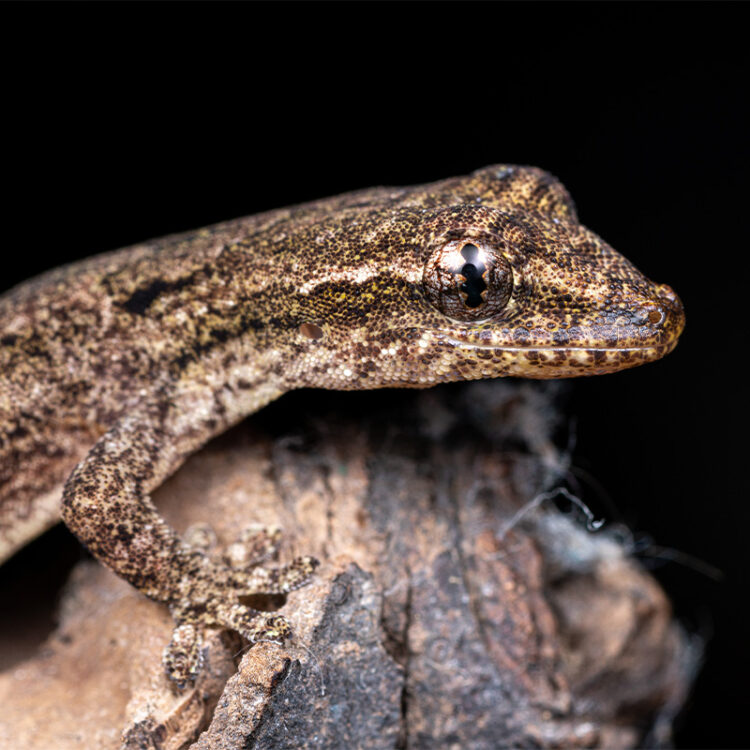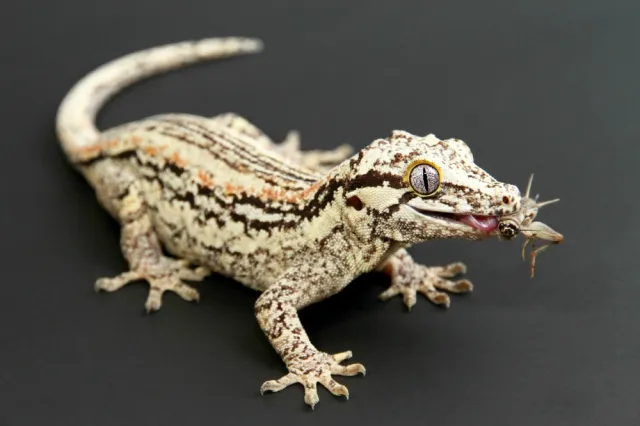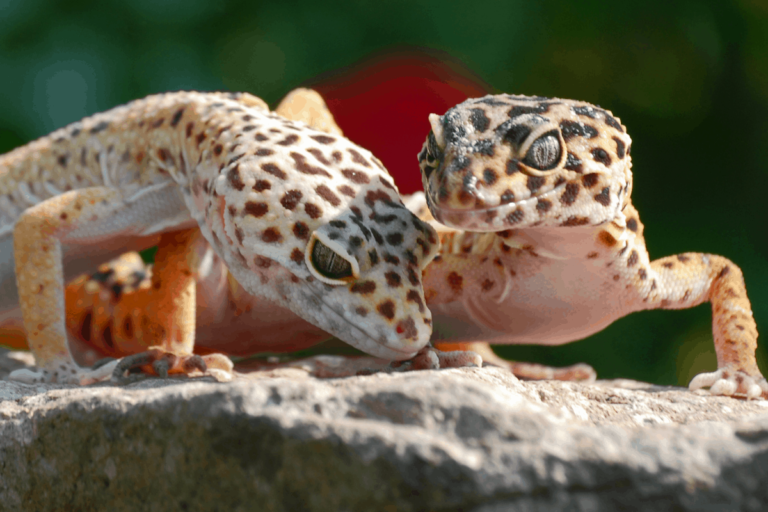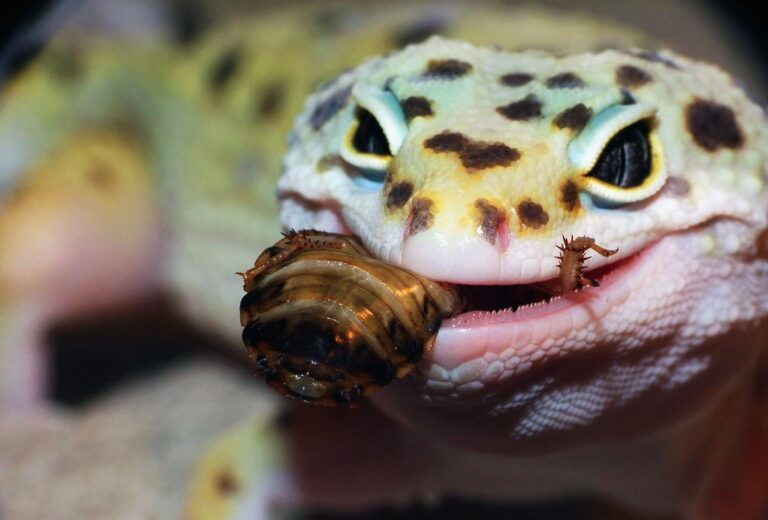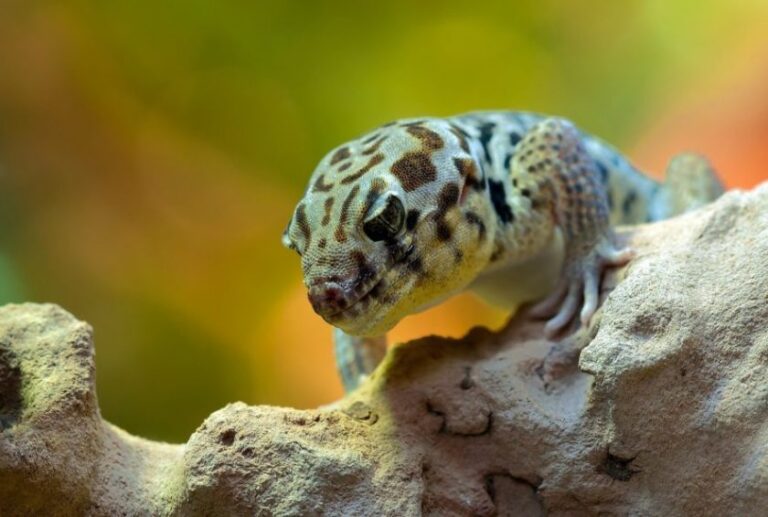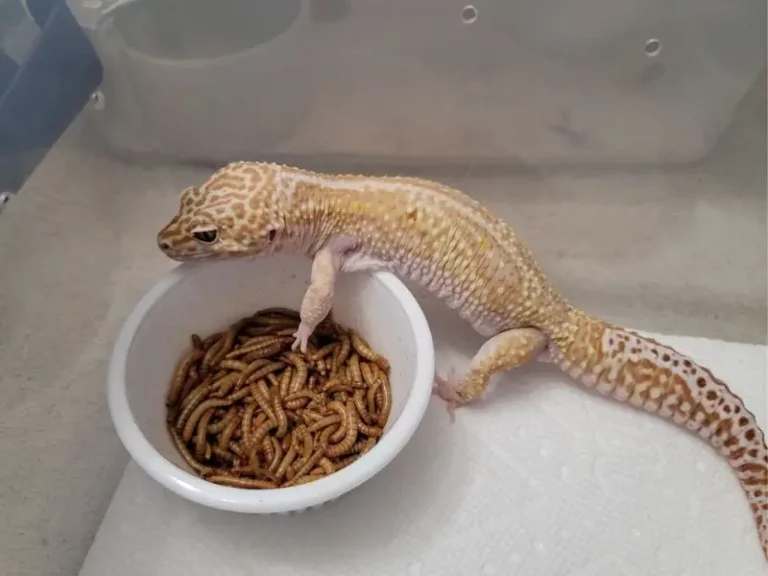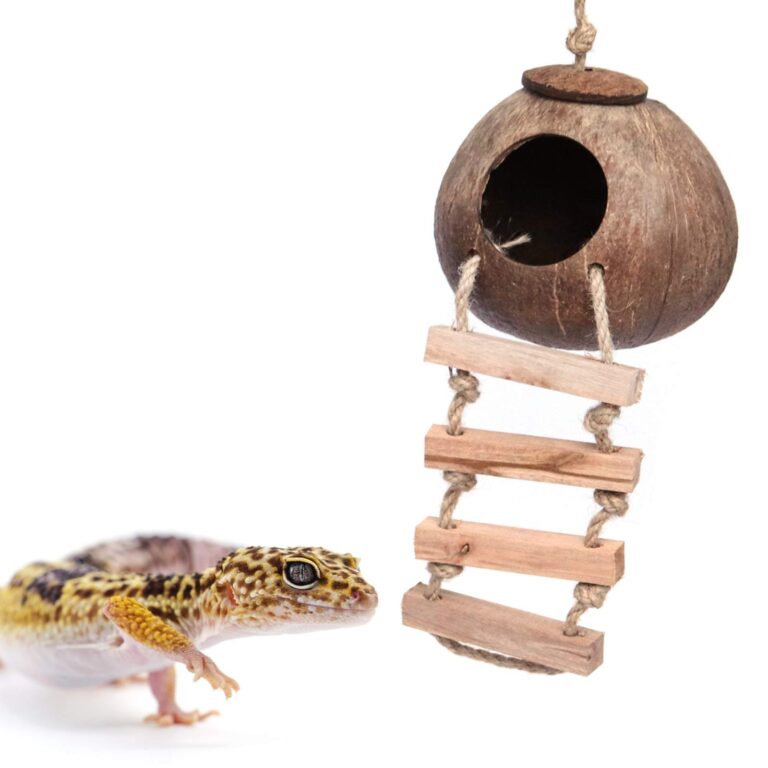What Do Mourning Geckos Eat?
As I embarked on my journey to explore the fascinating world of mourning geckos, I found myself on a quest to unravel the enigmatic secrets of their dietary preferences. These diminutive creatures, known for their captivating appearance and remarkable reproductive abilities, have long piqued the curiosity of herpetologists and reptile enthusiasts alike.
Among the emerald leaves, I discovered a small, agile gecko with mournful eyes, navigating its way through the verdant canopy. This remarkable creature, scientifically named Lepidodactylus lugubris but often affectionately referred to as the mourning gecko, has carved out a unique niche in the reptilian world.
But what exactly do these elusive geckos dine on in their secluded arboreal hideaways?
However, They being omnivorous, have a versatile diet. Also, can thrive on a combination of plant-based foods like fruit mixes, nectar-based options, and mashed fruits. In addition, they can benefit from protein-rich feeders such as crickets, dubia roach, black soldier fly larvae, and more.
In this comprehensive guide, we will not only answer the fundamental question of “What do mourning geckos eat?” but also explore the intricacies of their dietary preferences. So let’s start.
What Do Mourning Geckos Eat: A Full Guide
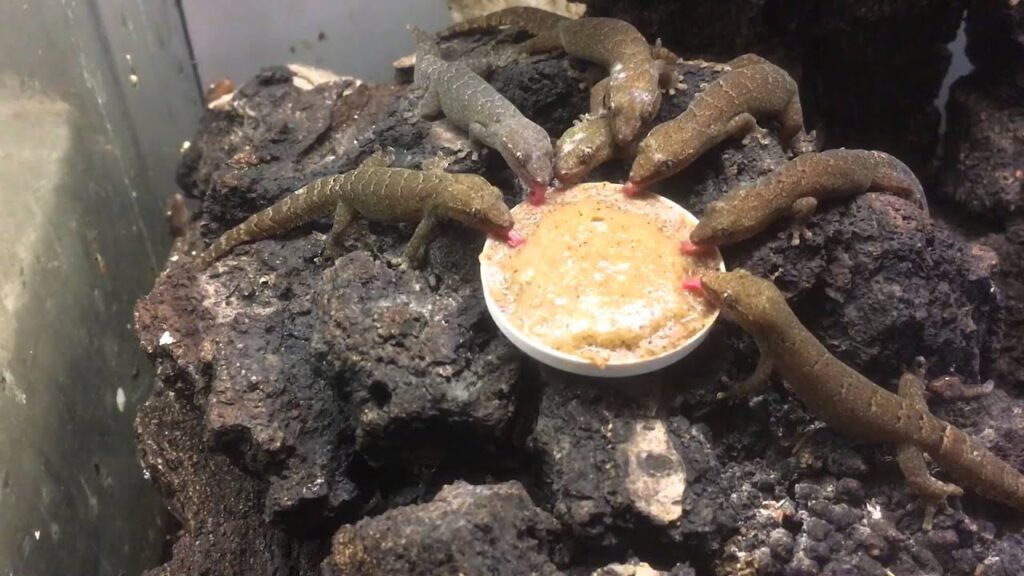
Additionally, offering Zilla Gut Load Cricket Drink can help ensure the insects are packed with essential nutrients before being provided to the geckos.
To further bolster their nutritional intake, you can provide a powdered crested gecko diet as a staple in their diet. The crested gecko diet is a convenient option that offers a balanced combination of nutrients.
Supplements play a vital role in the health of Mourning Geckos in captivity. It’s recommended to lightly mist the feeder insects with Zilla Calcium Supplement and Zilla Vitamin Supplement 1-2 times weekly. This practice helps give the geckos an extra dose of calcium and vitamin D3, along with other vital nutrients necessary for their well-being. These supplements can also be incorporated into the crested gecko diet if you are not offering insects regularly.
Insects:
They will readily consume a variety of small insects such as fruit flies, pinhead crickets, small roaches, bean beetles, and other tiny invertebrates. These should be appropriately sized for the gecko to swallow without difficulty.
Also, Both adults and juveniles can enjoy crickets that are 1/8 to 3/8 inches long. The size of the crickets you choose depends on the size of the geckos you’re feeding. To enhance the nutritional value of these feeder insects, it’s essential to provide them with a well-rounded diet known as gut-loading
Fruit:
They also enjoy eating ripe fruits, such as mashed bananas, papaya, and mango, and small pieces of soft fruits like strawberries and peaches. It should be offered in moderation, as too much sugar can be detrimental to their health.
Nectar:
They have a unique feeding behavior in the wild, where they consume nectar from flowers. At home, you can provide them with commercial nectar mixes designed for geckos. These mixes often need to be diluted with water to the recommended consistency.
Gut-loaded insects:
If you feed them insects, it’s crucial to “gut-load” them first. This means feeding the insects a nutritious diet before offering them to your geckos. This practice ensures that get more nutrients from their prey.
Supplements:
To ensure proper nutrition, consider dusting insects with calcium and vitamin supplements, particularly for growing or breeding geckos. Consult with a reptile veterinarian or experienced reptile keeper for guidance on supplementing your pet’s diet.
Further, it’s recommended to lightly mist the feeder insects with Zilla Calcium Supplement and Zilla Vitamin Supplement 1-2 times weekly. This practice helps give it an extra dose of calcium and vitamin D3, along with other vital nutrients necessary for their well-being. These supplements can also be incorporated into the crested gecko diet if you are not offering insects regularly.
Water:
Lastly, they also drink water droplets from leaves and other surfaces. Ensure that they have access to clean, chlorine-free water by misting their enclosure regularly. You can also provide a shallow dish of water, but make sure it’s not too deep to prevent drowning.
Feeding Schedule For Mourning Geckos In Captivity:
| Day of the Week | Feeding Type |
| Monday | Crested Gecko Diet (CGD) |
| Tuesday | Crested Gecko Diet (CGD) |
| Wednesday | No Food |
| Thursday | Insects (e.g., fruit flies, crickets) |
| Friday | Insects (e.g., fruit flies, crickets) |
| Saturday | Insects (e.g., fruit flies, crickets) |
| Sunday | No Food |
Quick Food Checklist:
Plant-Based Options:
- Offer mashed fruits like bananas, mangoes, papayas, blueberries, or watermelon, but only during supervised feeding sessions.
- Consider using powdered fruit mixes, such as Crested Gecko Mix.
- Explore nectar-based commercial food, with brands like Crocdoc and Komodo providing suitable options.
Protein-Based Choices:
Utilize flightless fruit flies, bean beetles, rice flour beetles, small black soldier flies, pinhead crickets, small calci worms, and newborn Dubia roach nymphs, red runner roach nymphs, discoid roach nymphs, or snail hatchlings.
Remember to ensure that feeder insects are well-fed (gut-loaded) for 24 hours before offering them to your mourning geckos. Choose feeder insects that are approximately half the size of your gecko for proper sizing.
Recommended Calcium Supplements:
- Repashy SuperCal NoD
- Arcadia Earth pro-Ca (does not contain Vitamin D)
- Jurassic Natural Calcium (contains Vitamin D)
Distinctions in Feeding Mourning Geckos: Adults vs. Juveniles
Feeding both adult and juvenile mourning geckos follows a similar approach, but there are some important distinctions to consider. The primary focus remains on achieving a balanced diet that includes Crested Gecko Diet (CGD) and protein sources like feeder insects, along with essential calcium supplementation.
While CGD is a key component of their diet, it’s not sufficient to offer it daily to either juveniles or adults. Both age groups require protein and calcium to maintain a healthy balance. Therefore, simply providing CGD every day is not advisable. Instead, ensure that they receive feeder insects at least three times a week.
The main difference lies in the size of the feeder insects. For juvenile mourning geckos, opt for smaller insects, around 1/8 of their size, and make sure to dust them with calcium powder. Flightless fruit flies are an excellent choice for this purpose.
Juvenile mourning geckos can easily consume flies of this size without harm, as they are proportionate to the geckos themselves. As they grow into adulthood, you can transition to feeder insects that are approximately half their size, such as newborn dubia roach nymphs.
It’s crucial to avoid offering feeder insects that are the same size as or larger than your geckos, as these insects can potentially harm the geckos. Additionally, avoid providing pre-killed insects that are still larger than your geckos, as they may not attempt to eat them, and there is a risk that the insects are not fully immobilized.
Furthermore, always be cautious when handling live feeder insects to ensure they do not pose a threat to your mourning geckos. Maintaining these distinctions in feeding practices will help keep your geckos healthy and thriving.
What Not Give Mourning Geckos To Eat?
When caring for mourning geckos, it’s important to avoid feeding them certain foods or substances that can be harmful to their health. Here’s a list of things you should not give to mourning geckos:
Toxic Foods: Avoid giving them foods that are toxic to reptiles, like avocados or citrus fruits.
Wild Insects: Don’t feed them insects caught in the wild, as they might carry harmful stuff.
Too Big Insects: Never offer insects bigger than their heads to prevent choking.
Pre-Killed Large Insects: Mourning geckos might not recognize these as food, and they can rot.
Junk Food: Keep away from high-fat or sugary human foods and stick to natural options.
Dodgy Insects: Only use insects from trusted sources and make sure they’re well-fed.
Hard-Shell Insects: Hard-shelled insects like mealworms can be tough to digest.
Missed Supplements: Don’t forget to give them calcium and vitamins, especially if they’re laying eggs.
Substrate as Food: Watch out for them accidentally eating their bedding, which can cause problems. Consider using a feeding dish to minimize this risk.
FAQs
Q1: What can you feed mourning geckos?
Mourning geckos can be fed a diet of fruit mixes, nectar-based foods, mashed fruits, and protein-rich insects.
Q2: Do mourning geckos eat fruit?
Yes, mourning geckos enjoy fruit as part of their diet, but it should be offered in moderation.
Q3: How often should you feed mourning geckos?
It’s recommended to feed mourning geckos a balanced diet every 48 hours, with protein-rich insects included at least three times a week.
Q4: Do mourning geckos need a water dish?
Yes, While they primarily drink water droplets from surfaces, it’s good to provide a shallow water dish to ensure hydration.
Q5: Can you feed geckos dead food?
No, It’s best to offer live or moving insects to stimulate hunting instincts, as they may not recognize pre-killed insects as food.
Q6: Do mourning geckos eat ants?
Yes, Mourning geckos may occasionally consume ants if they encounter them, but they are not a primary food source.
Q7: Do mourning geckos sleep?
Yes, mourning geckos are nocturnal, so they are active at night and sleep during the day.
Final words
In conclusion, my exploration into the dietary habits of mourning geckos has been quite an eye-opener. These small reptiles are quite food enthusiasts, embracing both plant-based and protein-packed options with enthusiasm.
From observing them savor nectar to the excitement of watching them snatch a tiny cricket, it’s clear that they are adaptable eaters. To ensure their well-being, I’ve learned the importance of offering a varied diet, including fruits, nectar-based foods, and insect treats.
Furthermore, this diversity not only keeps them healthy but also mimics their natural diet in the wild. I’ve also grasped the significance of providing appropriately sized insects and essential calcium supplements to support their growth.
So, when pondering what to offer them to eat, it turns out the answer is a delightful mix of foods that cater to their unique tastes. It’s been an educational and enjoyable journey, highlighting the wonders of these small reptiles and making the world of reptile care all the more fascinating.

